

Oral Histories of Galapagueños
Jerry Emory
| Introduction by Jerry Emory |
|---|
| Carmen Angermeyer |
| Alfonso Balladares |
| Karin Guldberg |
The People of the Galápagos Islands
Some 600 miles of the western coast of South America, the Galápagos archipelago embraces a score of islands and islets. Young or old, eruptive or dormant, these jagged-edged islands straddling the equator nourish an incredible array of plants and animals found nowhere else. But there is an additional fact that is often overlooked—11,000 people call Galápagos home.
Since the first chance visit by a becalmed Spanish caravel in 1535, humans and Galápagos have been inextricably linked. Througout the next three centuries, pirates, whalers, and fur-seal hunters intermittently sailed these arid islands seeking out fresh water from precious few springs, and caching giant tortoises below deck as larder against lean times betwen distant shores.
The first colonists came to Galápagos in the early 1800s, toting along a who's who of introduced animals which would subsequently prove deadly to the insular and predator-free environment. When English naturalist Charles Darwin dropped anchor in 1835, a scattering of islanders and banished convicts coexisted with seaweed-gathering iguanas and 30-foot cactus under a brutal equatorial sun.
Today, Galápagos plants and animals are the islands' undisputed national treasures, and the prime attraction for a lucrative ecotourism industry. Since 1959, 96 percent of the archipelago has been preserved as the crown jewel of Ecuador's national park system. Nobody disputes the obvious: these remarkable biological wonders deserve their sanctuary and the benefits of ongoing conservation programs. The longtime human inhabitants of Galápagos, however, are also unique, deserving of our attention, and possess their own “evolutionary” stories.
The lives of senior islanders—true Galapagueños—testify to an adaptability, singularity, and sometime strangeness that rivals their scaled and feathered neighbors. For the most part, these colonizers and island-born are at once, and by necessity, keen naturalists, jacks-of-all-trades, and visionaries.
In the mid-1980s I worked in the islands at the Charles Darwin Research Station on Isla Santa Cruz. During the year I spent in Galápagos, my lifelong fascination with natural history and wildlife gradually shifted—expanded, really—to encompass the stories and lives of the Galapagueños—the history, both natural and civil, of these island dwellers. I soon realized that in addition to the archipelago's world-famous animals and plants, los Galapagueños are amazing in their own right. The older residents have lived in a world apart, a tough and unrelenting wilderness, where a broken rudder or an empty canteen could, and did, mean death. Just as intricately as any lava lizard or swallow-tailed gull, these rugged people were part of the Galápagos ecosystem; either they adapted—learned the ways of the islands—perished, or set sail back to civilization.
Photographer Stacy Geiken and I set out to discover how and why these hardy few ventured from across the globe a half-century ago to settle in these remote Pacific islands. And, from those born and raised here, to learn what a Galápagos childhood meant. Galapagueños invited us into their living rooms, fed us, and welcomed the opportunity to tell of their lives, to set aside their routine, and to answer the questions of two curious foreigners.
What were the challenges these Ecuadorians, Americans, Germans, Belgians, Swiss and Norwegians faced in this harsh yet beautiful wilderness? How have the islands, and life in the islands, changed since their arrival? And finally, what does the future hold for Galapagueños and the islands they hold so dear?
Carmen Angermeyer
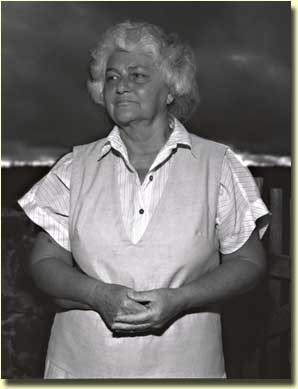
Puerto Ayora, Isla Santa Cruz—August, 1989
We are sitting in the living room of Carmen Angermeyer's house, which she shares with her husband Fritz § and a constant stream of grandchildren. The Galápagos' leading matron and unofficial historian likes to serve chunks of dark chocolate with her coffee. This simple treat, offered on these rough and arid shores, somehow has never tasted better.
Carmen's childhood memories are filled with hard times and adventure. She has watched the growth of the town she calls home, Santa Cruz Island's Puerto Ayora, on the shores of Academy Bay, since 1934. Only Karin Hjerkin Gulberg, of San Cristóbal Island, has lived in the islands longer.
J=Jerry Emory
C=Carmen Angermeyer
S=Stacy Geiken
Photo © Stacey Geiken
§ Fritz Angermeyer; 1917-September 4, 2007
C: I'll tell you, a lot has been written about Galápagos that is wrong. It is quite a problem. Sometimes people come down here for a short time, go around collecting little bits here and there. Sometimes you just have a conversation with them, and they go home and write down whatever they heard. What they think they heard. And the problem is that writers come later, and read what somebody else wrote, and the same errors go on and on for quite a time.
J: Tell me a bit about where you were born, how it was that you came out to Galápagos. And maybe just some early impressions.
C: Well, I was born in Spain, in Madrid. My father worked in the German Embassy and married my mother there in Spain, so I grew up there until I was five or six years old. So I already spoke Spanish when I came to Ecuador.
J: Is your mother German or Spanish?
C: Well, my mother was from Hanover. My father was from Alsace-Lorraine and was French or German, depending upon whatever political situation was going there. And, he read something about Galápagos written by Dr. Ritter. Ritter wrote popular articles and some of his letters were published in Germany, and I don't know where my father picked them up. But, somewhere he picked something up, and he got interested. That was in 1930, or 1931, something like that. And in '32 he didn't like the situation in Europe. It didn't look very good. It was very upsetting. It looked like war actually. So, he came to Galápagos in 1932, all by himself and spent four months here, on Isabela. The last evening when he left after those four months, he told us he saw a volcano eruption. And, I think he only spent about a day or so here in Santa Cruz. He really liked it very much, but he didn't think it was very good to come here to live for a family. But finally in 1934 we did come down and there was something like 28 people in Academy Bay. Can you imagine the difference from now when there are probably six or seven thousand people in Santa Cruz [on the whole island, not just Puerto Ayora], somewhere around there? And, I grew up here then. I spent some years on the mainland, living there too.
J: So, your father left Isabela and went where?
C: He went back to Spain. He also traveled around Ecuador having a look. I remember he was gone for four months in Galápagos and several months in Ecuador traveling around having a look at the country. And he liked it. When we came out here, he became an Ecuadorian citizen. He said that “If I live in a country, and I think I am going to stay there for good, then I should take the citizenship of that country too.” And that is what he did. So when we came in 1934, I think by 1935 he had Ecuadorian citizenship.
J: Did you come through the Panama Canal?
C: Ya sure. Actually it was my birthday when we went through the Panama Canal, I remember that.
J: So, you came through the canal, then straight down to Guayaquil? Did you have your own boat, or did you take a cargo boat?
C: We took a cargo boat. But we spent about six months in Guayaquil because I got quite ill there, and we missed the one ship to Galápagos. And then you had to wait until the next one came, there was no other way around it. So, it took us about six months before we could come out to Galápagos.
J: Did you come straight to Academy Bay?
C: We came straight, but via San Cristóbal. The ship would usually arrive at San Cristóbal and then come over here [Santa Cruz], and then continue to Isabela. And once in a while it would go out to Floreana also to take come cargo there. But there were so few people on Floreana that it wasn't standard to go every trip.
J: The 28 people on Santa Cruz when you arrived, were they mostly Norwegian, or was there already a mix?
C: It was a mix. You could probably say there was roughly half foreigners and half Ecuadorian people more or less, and most of the foreigners were Norwegians. There was also a Danish couple.
J: Was there anyone living on 'the other side' or were they all in town?
C: All over there, in town. There was nobody living in this area. This area was settled in '37 I believe. One Norwegian family came across over here, but at first they were by themselves. The next were us in, I think, in '46.
J: How old were you when you first came out here in '34?
C: Six, but close to seven.
J: Were you schooled at home?
C: School was home, ya. My mother was my school teacher. And our kids the same. They had school at home, um, let's see, Fiddi went to school two years, ten to twelve. Then he had school at home, then he went to the states for school. But the girls never went to school. By the time the school came over here, they were grown up. They were past their school age. So Fritz and I were their teachers, just the two of us. But mostly I was our children's teacher. Fritz would help when I couldn't manage.
J: In the first couple of years after you arrived in '36, did you and your parents go up to the highlands at all, or did you stay at the beach?
C: We lived down at the beach but my father had a farm up there. He would go and spend a few days up there then come down again, spend a few days down here, then a few back up there on the farm. We would buy staples like flour, sugar, and rice. But then you had to plant for other food. You couldn't buy anything. Money ... many times if you had money, you just couldn't buy anything. Usually if you wanted something, someone else would trade with you for it. Somebody had a nice fat pig, and they might say, well, you got some flour, let me have some flour, and I'll give you some fat. That sort of thing, which nowadays is practically past.
It was really colonization in those days. Nowadays people are called “Colonos” and they aren't colonos anymore. It is not colonization anymore, that's in the past. The first ten or twenty years we were here, that was colonization. But by then, the ship would come more regularly, and so on. In those days you sat here and you knew that four months had gone by and anytime the ship must be coming. And usually it would show up early in the morning, and everybody would go to meet it. A ship coming on the horizon: big thing. Everybody running together on the beach. Big thing. Now you pay no attention. Ships come in, and it doesn't matter anymore. They come and go and, somebody says “The Bucanero was in today,” and I think, “I don't know. Did I see it or not?”
J: How long did you stay in the islands before you first returned to the continent?
C: I think the first time I went back was seven years later, or something like that. In those days, if you went to the mainland, you could count on staying up to three months. And, you usually went in for the dentist, that was one of the important things you went in for. So, when you went in, you took lists from everybody, about this long [she stretches her arms, one over her head, the other below her seat]. Miles of shopping lists. And you were busy buying all these things, packing them, and putting them on the ship to bring them out. No store here, like nowadays.
J: Did you have a group of childhood friends you played with on the beach, or did you work a lot on the farm?
C: It was hard for children in those days. There weren't many. Most were in the hills and I was living down here. So, sometimes for a couple of months, I wouldn't see anybody. Let me see, there were one, two, four, five, six ... six or seven other kids. That was about it. Two of them left, went away. One of them was Alf Kastdalen, you probably heard of him here and there. A few years ago when you were here, he was already gone. He died in the bad El Niño year, electrocuted, just before you came.
There were few children in those days, few families with children. Those were the very first years of course. After that, people started coming in. After World War II, when the American base was here, a lot of people started coming. From then on it got moving more and more. There were groups of people that would come in, like when the hospital was built. Workmen would come for contract work. Building constructions like the church, school, hospital, or the Navy compound would bring in workers. Some would stay and bring their families later. So the population augmented. Now they are coming faster than they should. It is putting a lot of pressure on the place, people coming in so quickly. Not enough housing, not enough water. Ya, too fast.
S: What were some of your first impressions of the land? It was so different, like a fantasy land. Did it scare you? It is so different than Spain.
C: Oh ya, very different. Well, yes, it was fascinating. You have all of the tame animals and all that and so on. Not scary, not really. Lots of things to see and do. Kids have a wonderful time here.
J: I would never have guessed you were born in Madrid.
C: Ya, and I never went back. We once had a charter with a couple, an American married to a Spanish woman, somebody from the American Consulate, and they were telling how beautiful it had been in Madrid, how much pollution there is now. The beautiful areas, all polluted. Like everywhere else in the world, I suppose. This morning we had all this diesel again in the bay. Phew, so smelly.
J: We were watching Martin [Schreyer] unload some gas, and it was all over the place.
C: Ya, if it is done right, it's O.K. But if it isn't done right, it's a problem. Last night we went into town about nine, I think, Maggie and I, and you could smell it. You couldn't see it of course, but you could smell it. And this morning, when we went again, you could smell it again, some boat was leaking or something. When a ship comes it is always worse.
J: Well, thank you very much Carmen.
C: Well, you are very welcome.
Alfonso Balladares
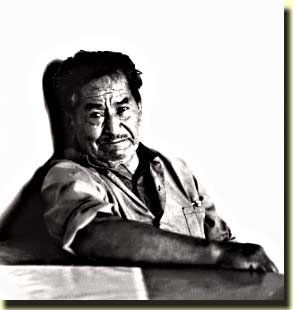
Puerto Villamil, Isla Isabela—February 28, 1991
Alfonso Balladares knows the southern highlands of Isla Isabela like no one else. As a teenager, he set sail from mainland Ecuador to hunt wild cattle across the moist windward flanks of Isabela's sleepy volcanoes. To this day, almost 65 years later, the aging cowboy roams the highlands of Galápagos.
Time hasn't changed the little huts of Puerto Villamil very much. Palm thatching still protects against infrequent rains and blinding equatorial days. But today Villamil supports an austere town square and a scattering of wood and cement houses. In the shallow harbor a covey of portly fishing boats sway at anchor, while troupes of neon flamingoes glow against the black lava that rims the turquoise lagoons behind the town.
J = Jerry Emory
A = Alfonso Balladares
Photo © Stacey Geiken
Jerry Emory: When did you arrive here?
Alfonso Balladares: I came in 1927, when I was only 16 years old. Before that I lived in Guayaquil and Cuenca, and I didn't even know what Galápagos was. But I came, and I'm still here. I arrived with 18 other men to work on the cattle and to plant coffee. When I arrived there wasn't more than three little huts made of palm fronds. The ranch I worked at, Hacienda Alemania, was way up in the mountains. It took a few days just to get there.
J: Who lived here when you arrived?
A: The owner of the hacienda, Carlo Gil. And the previous owner was his father, Antonio Gil.
J: And you've stayed here since you arrived?
A: Yes, and now I have my own little farm and coffee trees. I've grown to like it here.
J: When were you born?
A: 1911. The 4th of August.
J: Do you have any family here? Any children?
A: No, no, no. I have a son but he lives in Guayaquil. Actually, I have five childen in Guayaquil. My wife is Patron's Aunt.
J: Are you now the longest-term resident here in town?
A: Yes. Well, there may be one older. Yes, Olmedo Gil, but he is blind now. He is really old. He was already here when I arrived. You know, he is from the family that owned the hacienda.
J: That's where you worked in the highlands for years?
A: Yes, running cattle and corralling them.
J: What happened to the cattle?
A: They were shipped to Colombia and Peru.
J: Alive? Or just the skins?
A: Alive at first, but they changed that eventually because they always died during the trip. One time they sent 220 cattle to Colombia and by the time they arrived only five were alive. It's 15 days of navigation and they died seasick. After that they only sent hides. And we only had seven hunters, and we got them with bullets.
J: You shot the wild cattle?
A: Well, we didn't kill the good-looking ones, only the old or the skinny ones. There used to be thousands of wild cattle in the highlands. Today only Cerro Azul has them. And the only way to get to Cerro Azul is by land, on foot. I used to go there to collect Galápagos oil [from the tortoises] and cowhides. It was about a 15- or 18-day trip, by foot. We also collected iguana hides and wild dog hides. We made ponchos and sweaters out of the dog hides. We also ate a lot of Galápagos meat. It was great, but today that is prohibited. And pigs! They were everywhere.
J: When did the cattle disappear?
A: When the penal colony arrived. There were 270 of them when it began, and they did a lot of hunting.
J: What do you think about the recent changes in the islands?
Changes here? I've had thoughts about going back to my family in Cuenca. I even have relatives in Colombia. But I have my land, even though it is getting harder every year to make any money, even though I make great coffee.
J: So, this group of 18 young men who arrived here over 60 years ago to work on the hacienda . . .
A: None are left. Only me. They're all dead.
Karin Guldberg Cobos
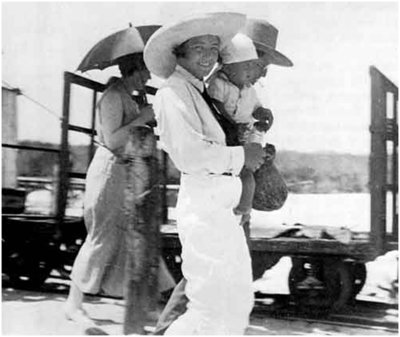
Puerto Baquerizo Moreno, Isla San Cristóbal—February 26, 1991
In the island's provincial capital, Galápagos' senior resident is dismayed by what she sees happening to her islands. Karin Hjerkin Guldberg sailed here in 1926 with 80 fellow Norwegians, 40 prefabricated houses, a few generators and a tractor.
J=Jerry Emory
K=Karin Gulberg
S=Stacy Geiken
Photo © John Woram
K: When we got here, it was a paradise—a paradise for everyone. We had everything, even telephones, in order to make a town. There was a small settlement here, but not much. When our boat arrived some of the locals came onboard, among them the man that I eventually married (Manuel Cobos, the son of Manuel J. Cobos), and his brother-in-law (Rogerio Alvarado). My husband-to-be was recently back from France where he had been studying. He came back to help run the sugar refinery that was here. Sugar was only ten sucres for a quintal (100 pounds), and there was so much food that a lot of it would go bad before we could get to it. But now, you can hardly find a pound of sugar in the whole town. People don't work here anymore, they just walk around in the streets, and there's barely enough food.
J: What happened to the Norwegians who arrived with you?
K: Little by little they returned to Norway. Many were adventurous and good students, but they soon realized that conditions were better at home.
J: But your family remained?
K: Yes. My father, myself, and my sister Snefrid. My mother had died before we left Norway. Snefrid went back to Norway for awhile, but she came back here before the war.
J: When your family arrived, did you stay near the beach or go up into the highlands?
K: We stayed here at first. We had to unload all those houses and other material. So, we put two houses up here, and then we also put some together up in the highlands. We even set up rolls of wire so we could have electric lights and telephones. We had dentists, doctors, and a lot of students in our group. Most left, but I got married and had six children here.
J: What did your family do during those early years?
K: We brought all the houses up into the highlands. The land owner gave us some land to construct our “Campo Noruego” which is now known as Santa Monica.
J: Did your father remain here until his death?
K: Yes, he stayed. He had his little farm of 20 hectares. Each Norwegian settler had 20 hectares. He planted everything, even rubber trees. He was really interested in medicinal plants. But the local people were always asking him why he planted fruit trees and all sorts of plants. He'd tell them he just wanted to eat fruit from his own trees. They called him mandicombio, Mr. Loco. And why? Just because he liked to plant things. But he lived happily here and died when he was 89.
J: How many people lived near the beach when you arrived?
K: At that time, just the owners of the sugar factory, my husband, his sister (Josefina), her husband and some workers. When my husband was in France he studied sugar production for six years. He wanted to build 20 sugar refineries circling the island, 200 feet above the ocean. He had determined that was the ideal elevation to grow sugar cane.
J: I recall reading that the son of the elder Manuel Cobos had died many years ago.
K: No, he is alive, and I married him. But you know, back in those days men didn't just have wives, they also had girlfriends.
J: When you arrived, El Progreso was already established, right?
K: Yes, it was here in the highlands, and there were about 300 workers up there. But here at the beach there was only the company house and a bodega. And the roads up into the highlands were well maintained, not like now. I could either ride up there by car or horse—there was one road for each. When I was young, I could get back down here on horseback in about 15 minutes, but that was really moving fast. The road for the cars was used to haul sugar.
S (looking at tortoise shell resting against a wall): Your son (Dagfin) used to sleep in this shell as a cradle?
K: I made a cradle out of it to hold him.
Before you leave, look at the photographs of my grandparents and the diploma.
Karin Guldberg's Grandparents
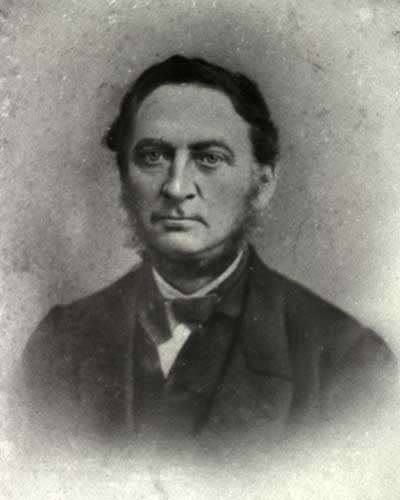
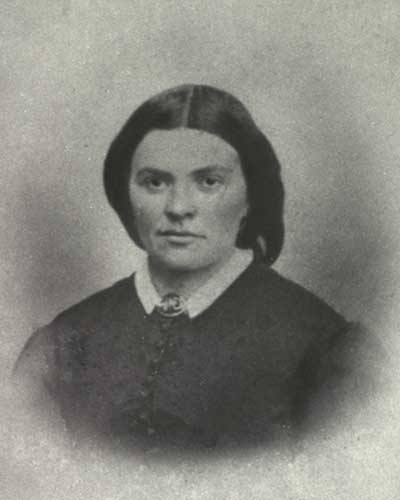
DIPLOMA: To Señora Karin Guldberg, the oldest foreign colonist of San Cristóbal canton.
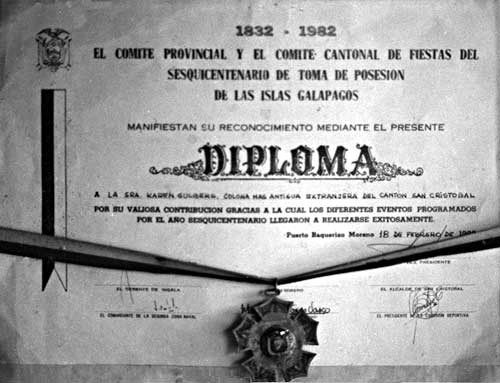
Karin Guldberg Cobos died on January 14, 1996.